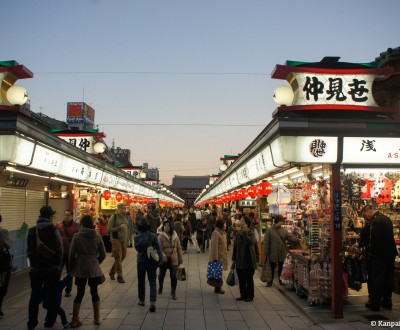Japan's tourist inflow is not only good news
Even if the amount of tourists in Japan has been the center of attention for a few years, records of attendance carry on year after year.
Touristy populations and exemption of visas
From a Western point of view, these figures do not immediately impact as two third of tourists in Japan are from Asia. Since 2013, the first non-Asian nationality on the archipelago comes from the USA with only… 7,7% of the total, decreasing to 4,8% in 2017, while the number of tourists keeps on increasing. In 2017, Hong Kong, Taiwan, Korea and China represent only by themselves 74,2% of tourists in Japan, while the rest of Asia represents 11,9%.
Since at least 2014, it looks like only Kyoto saw the reverse tendency where 45% of the tourists were from Europe or North America. As a general tendency, all countries see their percentage increasing, with a high average of increase of 15% since November 2017 for the visitors coming from the USA.
In 2016, France, still the record country for its number of tourists, with 3,5 times more visitors than its Japanese competitor, welcomed 2 millions of Chinese tourists (slightly decreasing from the record year 2015), that is 3 times less than Japan, thanks to the recent policy of increasing the number of given visas and decreasing the delay to obtain them.
Therefore the Japanese population takes stands with neighbors it does not always appreciate and with whom some relationships might be more than strained (just like the Yasukuni example, coming back regularly on the news). However, if the Japanese economy wants to recover, it will have to come from tourism and the government perfectly understands it. Therefore, just like with France and numerous other countries, the agreement about visas exemption for stays of less than 3 months long should probably spread to more nationalities. Currently in Asia, only South Korea, Taiwan, Singapore, Hong-Kong, Macao, Indonesia, Malaysia, Thailand and Brunei (both 15 days only) are concerned. The Philippines and Vietnam should also quickly benefit from this agreement. If China happens to enter this list one day, the flow of Chinese tourists will pour all across Japan at all times.
All these policies are made to compete against Japan’s eternal rival, South Korea, whose touristy attendance keeps on increasing thanks to its cultural appeal.
Drawbacks of this increasing tourism in Japan
Let’s face it: this Asian touristy population is sort of an invisible passenger for Westerners. For an unaware eye and a confused ear, indeed, rare are the facts showing the differences between a local and an Asian neighbor.
However, some of these populations do not share the values and customs 🛂 which defined Japanese people. Thus, we can sometimes notice noisy and undisciplined behaviors in public areas, which tend to upset Japanese people, getting easily embarrassed.
We are not trying to stereotype a specific nationality or another, but rather to help you notice some offbeat habits, or a “too much” relaxed behavior common to many tourists when being abroad.
Moreover, the Japanese archipelago remains cramped and not always adapted to a massive flow of tourists. Numerous stores, and not only konbini, have very surprising narrow aisles. The public transportation network is definitely not fit for luggage transportation and very little foreigners know the takuhaibin system which happens to be quite hard to understand for a non-Japanese speaker.
What can we say about Kyoto in this global problematic? As a major touristy city, it shows a complete immovable policy as of evolving its transportation network, far from willing to welcome more tourists. You can only imagine during sakura 🌸 and momiji 🍁 seasons (when you might queue for hours just to enter some temples) or during Gion Matsuri, when the city center is blocked for days!
Moralizers saying "it was better before" will all tell you this: before 2004 and campaigns "Cool Japan", discovering the archipelago was more quiet and relaxed. Fortunately, traveling in Japan is not solely about Tokyo/Kansai/Hiroshima, nor the Spring/Autumn seasons.
In February in Kagoshima, for example, no risks to be disturbed by groups of tourists! And numerous hidden gems presented on Kanpai are avoided by tourists because there are absent from guides and tour operators, leaving you for sure lots of choice to be peaceful during your discoveries in Japan!

